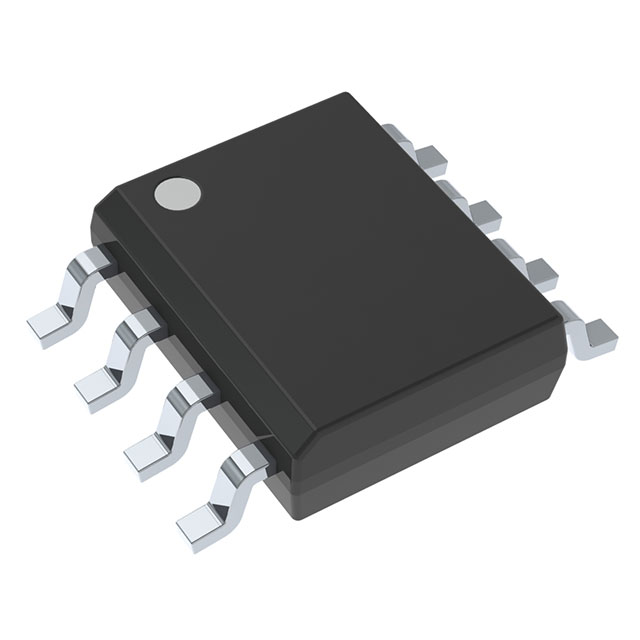
SN75LVDS9637D
ActiveHIGH-SPEED DIFFERENTIAL LINE RECEIVERS 8-SOIC 0 TO 70
Deep-Dive with AI
Search across all available documentation for this part.

SN75LVDS9637D
ActiveHIGH-SPEED DIFFERENTIAL LINE RECEIVERS 8-SOIC 0 TO 70
Deep-Dive with AI
Technical Specifications
Parameters and characteristics for this part
| Specification | SN75LVDS9637D |
|---|---|
| Data Rate | 155 Mbps |
| Mounting Type | Surface Mount |
| Number of Drivers/Receivers [custom] | 2 |
| Number of Drivers/Receivers [custom] | 0 |
| Operating Temperature [Max] | 70 ░C |
| Operating Temperature [Min] | 0 °C |
| Package / Case | 3.9 mm |
| Package / Case | 8-SOIC |
| Protocol | LVDS |
| Supplier Device Package | 8-SOIC |
| Type | Receiver |
| Voltage - Supply [Max] | 3.6 V |
| Voltage - Supply [Min] | 3 V |
Pricing
Prices provided here are for design reference only. For realtime values and availability, please visit the distributors directly
SN75LVDS9637 Series
High-speed differential line receivers
| Part | Data Rate | Protocol | Supplier Device Package | Type | Mounting Type | Operating Temperature [Max] | Operating Temperature [Min] | Voltage - Supply [Max] | Voltage - Supply [Min] | Package / Case | Package / Case | Number of Drivers/Receivers [custom] | Number of Drivers/Receivers [custom] |
|---|---|---|---|---|---|---|---|---|---|---|---|---|---|
Texas Instruments SN75LVDS9637DThe SN75LVDS32 and SN75LVDS9637 are differential line receivers that implement the electrical characteristics of low-voltage differential signaling (LVDS). This signaling technique lowers the output voltage levels of 5-V differential standard levels (such as EIA/TIA-422B) to reduce the power, increase the switching speeds, and allow operation with a 3.3-V supply rail. Any of the four differential receivers provides a valid logical output state with a ±100 mV allow operation with a differential input voltage within the input common-mode voltage range. The input common-mode voltage range allows 1 V of ground potential difference between two LVDS nodes.
The intended application of these devices and signaling technique is both point-to-point and multidrop (one driver and multiple receivers) data transmission over controlled impedance media of approximately 100. The transmission media may be printed-circuit board traces, backplanes, or cables. The ultimate rate and distance of data transfer is dependent upon the attenuation characteristics of the media and the noise coupling to the environment.
The SN75LVDS32 and SN75LVDS9637 are characterized for operation from 0°C to 70°C.
The SN75LVDS32 and SN75LVDS9637 are differential line receivers that implement the electrical characteristics of low-voltage differential signaling (LVDS). This signaling technique lowers the output voltage levels of 5-V differential standard levels (such as EIA/TIA-422B) to reduce the power, increase the switching speeds, and allow operation with a 3.3-V supply rail. Any of the four differential receivers provides a valid logical output state with a ±100 mV allow operation with a differential input voltage within the input common-mode voltage range. The input common-mode voltage range allows 1 V of ground potential difference between two LVDS nodes.
The intended application of these devices and signaling technique is both point-to-point and multidrop (one driver and multiple receivers) data transmission over controlled impedance media of approximately 100. The transmission media may be printed-circuit board traces, backplanes, or cables. The ultimate rate and distance of data transfer is dependent upon the attenuation characteristics of the media and the noise coupling to the environment.
The SN75LVDS32 and SN75LVDS9637 are characterized for operation from 0°C to 70°C. | 155 Mbps | LVDS | 8-SOIC | Receiver | Surface Mount | 70 ░C | 0 °C | 3.6 V | 3 V | 3.9 mm | 8-SOIC | 2 | 0 |
Description
General part information
SN75LVDS9637 Series
The SN75LVDS32 and SN75LVDS9637 are differential line receivers that implement the electrical characteristics of low-voltage differential signaling (LVDS). This signaling technique lowers the output voltage levels of 5-V differential standard levels (such as EIA/TIA-422B) to reduce the power, increase the switching speeds, and allow operation with a 3.3-V supply rail. Any of the four differential receivers provides a valid logical output state with a ±100 mV allow operation with a differential input voltage within the input common-mode voltage range. The input common-mode voltage range allows 1 V of ground potential difference between two LVDS nodes.
The intended application of these devices and signaling technique is both point-to-point and multidrop (one driver and multiple receivers) data transmission over controlled impedance media of approximately 100. The transmission media may be printed-circuit board traces, backplanes, or cables. The ultimate rate and distance of data transfer is dependent upon the attenuation characteristics of the media and the noise coupling to the environment.
The SN75LVDS32 and SN75LVDS9637 are characterized for operation from 0°C to 70°C.
Documents
Technical documentation and resources


